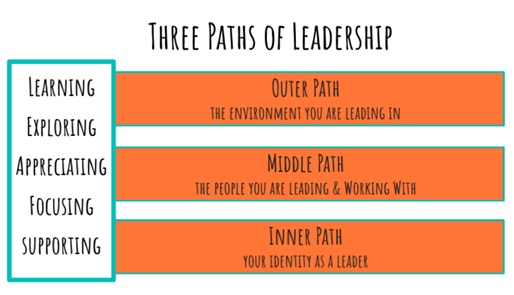A Coaching Model By Carol Surban, Leadership Coach, PHILIPPINES
Making the move from independent contributor to a leader in an organization is one of the most challenging transitions that a professional can make and research bears this out. Research shows that 38% to over 50% of new managers fail in the first eighteen months of being promoted (Riddle, 2011).
New leaders often find themselves in a place of being completely new and out of their depth with what they are being asked to do. A majority of new leaders often do not receive any management training with one statistic reporting that number to be as high as 58% (Workplace, 2019). This uncertainty is often accompanied by a sense of pressure to act as if they have it all together to prove they were the right choice for the job. This can stagnate new leaders in unhelpful thought processes and perspectives that lead to ineffective leadership in the workplace. All of this can keep them from growing, progressing, and fully stepping into their new identities as leaders in their organization.
The Three Paths of Leadership Coaching Model provides a way of orienting new and emerging leaders to their new identity as leaders. Through a systems-based approach to their thoughts, actions, and feelings as a new leader, each of the three paths help them come to terms with and understand the new ways they need to relate to their organizations, their teams, colleagues, mentors, bosses, and most importantly to themselves.
Overview for the Three Paths of Leadership Coaching Model
With leadership, a client is always on three paths.
- The Outer Path – This is the environment that the client is leading in. It is the organization they belong to as well as what that organization represents and stands for and how it accomplishes the work it does. This includes the company’s mission, core values, goals, management tools and processes, and leadership structure. It can also be the greater market within which an organization operates.
- The Middle Path – These are the people a client is leading and working alongside. This includes the client’s direct reports, their colleagues, their mentors, and their boss or bosses. These are all the interpersonal relationships a client relies upon.
- The Inner Path – This is the client and their evolving identity as a leader in the context of and in relationship with the various components of the Outer and Middle Paths. This includes the client’s values, principles, beliefs (visible and invisible, limiting and empowering), thoughts, and feelings.
 Each leadership journey is unique to the individual and the approach taken with the Three Paths of Leadership recognizes that new and emerging leaders bring their unique blend of experience, skills, and personal development to their new identity as a leader. They are not a blank slate and how they approach each of the three paths is heavily influenced by who they are, what they value, and the various paths they have traveled to get to this point in their life.
Each leadership journey is unique to the individual and the approach taken with the Three Paths of Leadership recognizes that new and emerging leaders bring their unique blend of experience, skills, and personal development to their new identity as a leader. They are not a blank slate and how they approach each of the three paths is heavily influenced by who they are, what they value, and the various paths they have traveled to get to this point in their life.
The Three Paths of Leadership coaching model uses the metaphor of a path to provide a sense of clarity and confidence that there is a way forward without being prescriptive about what that path needs to or has to look like for the client.
The client needs to understand that they may find themselves on different types of paths for each of the three leadership paths defined above. For example, a client may find that their Outer Path is well-defined and known because they have worked at their organization for several years and have a clear understanding of how it operates.

But that Outer Path can start to seem less straightforward and feel rocky and unstable in places as the client transitions into a leadership role.

As that client starts to take on the new challenges and responsibilities of leading a team that perhaps they were previously a member of, that Middle Path is known to a point and then becomes fuzzy and uncertain as colleagues become direct reports and relationships need to shift and be redefined.

All of these shifts and changes in the Outer and Middle Paths are often creating shifts and changes for the client on their Inner Path, but that path is often hidden and less known for the client. Coaching can help to uncover and highlight areas of inquiry and work that the client can pursue on their Inner Path that often helps to make traveling on their Outer and Middle Paths much easier.
Steps for the Three Paths of Leadership Coaching Model
This model has four main steps that the coach and client take together.
- Step One: Learning – Creating awareness of the three paths by naming and defining them
- Step Two: Exploring & Appreciating – Identifying what each of the three paths looks and feels like for the client at this moment in time
- Step Three: Focusing – Deciding which path the client wants to focus their energy and resources on to make progress
- Step Four: Supporting – Targeting coaching sessions and fieldwork to support the client’s desired progress
Step One – Learning
This is a place to share the system perspective with the client, so they can begin to orient themselves to the idea of being on the three paths and what those paths are in their new identity as a leader. This is also a place where coaching is most blended with consulting as this is a model and perspective to be shared with the client in the early stages of working together.
Questions to Consider with This Step
- Think about the Three Paths of Leadership (Outer, Middle, and Inner), when and how have you traversed each of these paths in your life? This can be your professional life or your personal life.
- Which of these three paths do you feel most comfortable and confident about?
- Which of these three paths do you feel more hesitant or unsure about?
- What comes to mind when you think about how these three paths could potentially influence each other?
Step Two – Exploring & Appreciating
This step is designed to orient the client to how their current career situation maps to the three paths of leadership and to begin the process of exploring those paths. Being able to look at the current state with curiosity and compassion helps create clarity and confidence for how to move forward and where the client needs to and wants to focus their energy and resources. It is important during this step to recognize and appreciate what is working and not simply focus on what might be feeling like a struggle or a stuck place for the client. Wrapped up in what is working, is usually the clues to the gifts and strengths a client possesses that they can use as they continue down the three leadership paths.
Questions to Consider with This Step
- What aspects of your career/work-life map to each of the three paths?
- How would you describe each of the paths in your career/work-life right now? What kind of paths are they? Smooth? Rocky? Foggy? Invisible?
- What is working well on each of these paths right now? What activities, systems or processes do you rely on?
- Who are your trusted traveling partners? Who do you turn to for support as you traverse each of these three paths?
- What are you currently doing to make progress on each of the paths?
- How do you recenter yourself when you feel you are off track?
Step Three – Focusing
After Step Two there is more clarity on the current state of each of the three paths and with Step Three, it is time to look ahead to what is next and where the client wants to focus their time, energy, and the coaching sessions.
Questions to Consider with This Step
Looking ahead, what do you want each of these paths to look like for you?
What values matter to you as you begin this work?
When you think about where you are in your career and development right now, which path (Outer, Middle, Inner) do you want to focus on most right now?
- What is drawing you to work on that path over the others?
- What do you want to get out of focusing on that path?
- What impact does focusing on this path have on the other paths?
- When you’ve worked on this in the past, what obstacles did you experience and how did you manage those obstacles?
- What do you think you really need to address to make progress on this path?
- What are you not considering when thinking about focusing on this path?
What are the common themes you are noticing with the three paths?
Step Four – Supporting
Supporting the client through the process of growing and developing as a new leader is at the heart of this final step. The direction, goals, and methods for achieving those goals are all determined by the individual client, and the coaching process and the coach will be there to support the client along the way. Helping the client to plan, practice new ways of thinking and behaving, take action and build effective systems of accountability are the primary ways the coach will support the client in achieving progress. Underlying every session and interaction is a sense of trust and presence.
Questions to Consider with This Step
- What actions do you want to take to move forward on this path?
- What might get in the way of you taking action or making progress?
- What other factors (people, projects, etc) do you need to consider that could impact your ability to make the progress you want to make?
- What types of accountability do you respond best to?
- How can you create more accountability to support your desire for progress on this path?
By looking at a client’s leadership journey through a systems approach of the three paths, new connections can begin to surface and greater levels of reflection and insight can emerge through the coaching process. Leaders really are situated on all three paths and keeping that in mind through identifying and exploring their paths, setting and achieving goals for growth and development along the paths, and recognizing and appreciating their own unique leadership journey helps new and emerging leaders find their way to their authentic leadership identity.
References
Riddle, Douglas. “Executive Integration: Equipping Transitioning Leaders for Success.” Center for Creative Leadership, www.ccl.org/wp-content/uploads/2015/04/ExecutiveIntegration.pdf.
“Workplace leadership statistics that you shouldn't ignore.” MDA Training, mdatraining.com/blog/workplace-leadership-statistics/.